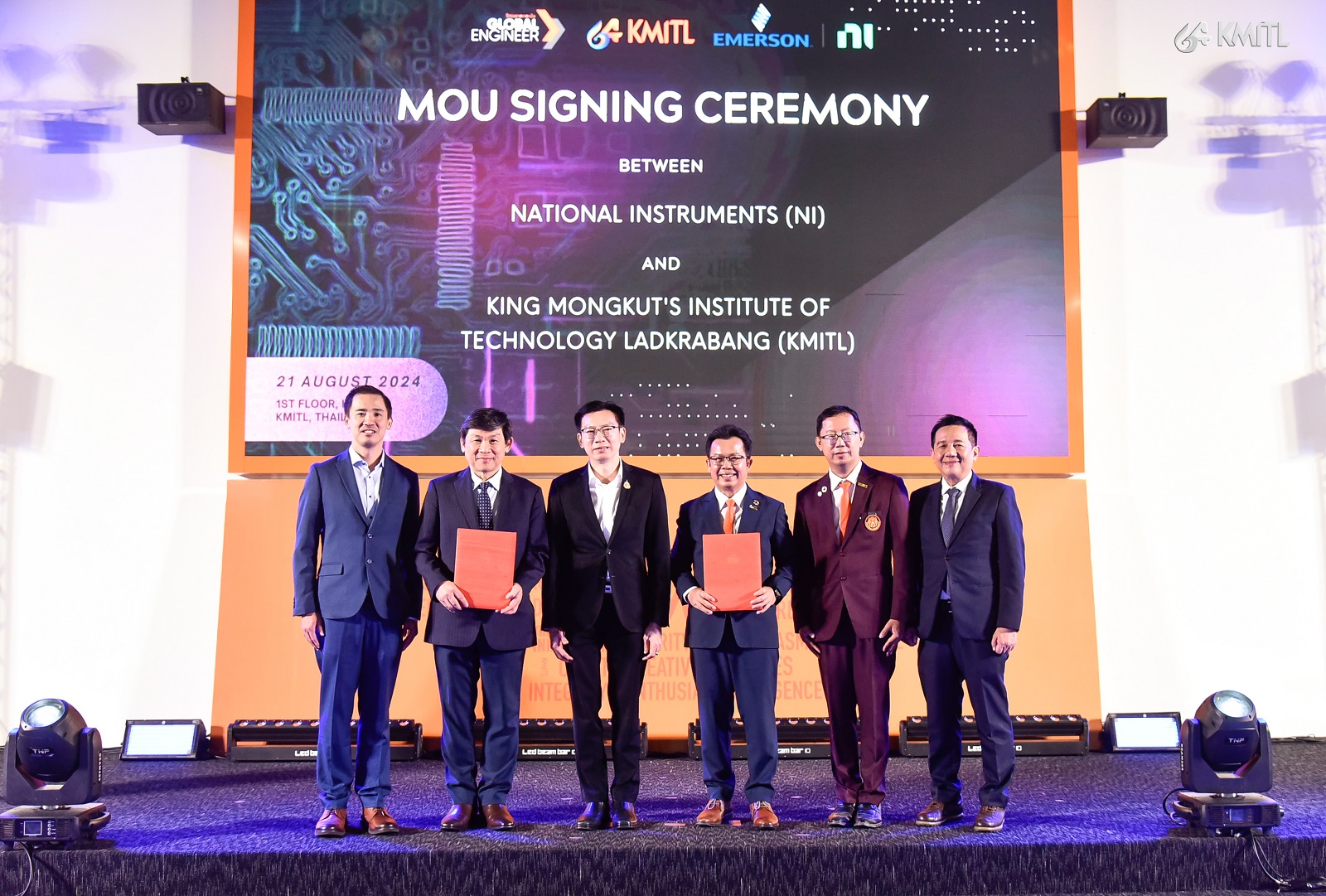- Details
- Category: ไอที-เทคโนฯ
- Published: Saturday, 29 April 2017 09:44
- Hits: 6994

นักวิทยาศาสตร์ใช้ IBM Power Systems ประกอบจีโนมของยุงที่แพร่เชื้อไวรัสเวสต์ไนล์’เทคโนโลยีช่วยเร่งความเร็วในการหาลำดับเบสของจีโนมด้วยค่าใช้จ่ายที่ต่ำมาก
ทีมงานภายใต้การนำของนักวิจัยจากศูนย์สถาปัตยกรรมจีโนม (TC4GA) แห่งวิทยาลัยการแพทย์เบย์เลอร์ ได้ใช้เทคโนโลยีจากไอบีเอ็ม เมลลาน็อกซ์ และเอ็นวิเดีย ในการประกอบจีโนม 1.2 พันล้านตัวอักษรของยุงสายพันธุ์ Culex quinquefasciatus ซึ่งเป็นพาหะของเชื้อไวรัสเวสต์ไนล์ โดยจีโนมใหม่นี้จะช่วยให้นักวิทยาศาสตร์สามารถระบุความไวต่อการติดเชื้อของยุงที่เป็นพาหะในการแพร่เชื้อไวรัส นำไปสู่การเพิ่มความสามารถในการรับมือเชื้อไวรัสเวสต์ไนล์
เทคโนโลยีคอมพิวเตอร์สมรรถนะสูง (High Performance Computing: HPC) ที่มีชื่อว่า 'วอลทรอน'(VOLTRON) นี้ ทำงานบนแพลตฟอร์ม IBM Power Systems ที่มีพลังประมวลผลศักยภาพสูง ซึ่งเป็นสิ่งจำเป็นสำหรับการวิจัยที่เกี่ยวข้องกับข้อมูลมหาศาล ที่ผ่านมาวิทยาลัยการแพทย์เบย์เลอร์ยังได้มีความร่วมมือกับหน่วยงานด้านซูเปอร์คอมพิวเตอร์หลายแห่งทั่วโลกที่นำแพลตฟอร์ม IBM Power Systems มาใช้ในการวิจัยที่เกี่ยวข้องกับเทคโนโลยีคอมพิวเตอร์สมรรถนะสูง อาทิ สถาบันวิจัยแห่งชาติโอ๊คริดจ์และลอว์เรนซ์ลิเวอร์มอร์ของกระทรวงพลังงานสหรัฐอเมริกา รวมทั้งศูนย์ฮาร์ทรีของสภาวิทยาศาสตร์และเทคโนโลยีแห่งรัฐบาลสหราชอาณาจักร
การประกอบจีโนมแบบ 3 มิติของวอลทรอน ที่ใช้แพทเทิร์นการม้วนตัวของดีเอ็นเอในการติดตามจีโนมในขณะที่มีการเคลื่อนที่สลับไปมาในนิวเคลียส กำลังเข้ามาเปลี่ยนแปลงแนวทางที่นักวิจัยใช้ในการหาลำดับเบสของจีโนม ทำให้การดำเนินการรวดเร็วขึ้นและมีค่าใช้จ่ายลดลง ตัวอย่างเช่น โครงการจีโนมมนุษย์ครั้งแรกต้องใช้เวลาถึง 10 ปี และมีค่าใช้จ่ายถึง 4 พันล้านเหรียญสหรัฐ แต่การประกอบแบบ 3 มิติสามารถหาลำดับเบสของจีโนมได้ภายในระยะเวลาเพียงไม่กี่สัปดาห์ ด้วยค่าใช้จ่ายไม่ถึง 10,000 เหรียญสหรัฐ
ความสำเร็จดังกล่าวถือเป็นผลดีอย่างมากต่อการต่อสู้กับการระบาดของโรค อย่างเช่นเชื้อไวรัสเวสต์ไนล์
“เทคโนโลยี IBM POWER และการเชื่อมต่อกันกับเมลลาน็อกซ์ อินฟินิแบนด์ ทำให้ปัจจุบันเราสามารถเปลี่ยนแปลงวิธีการประกอบจีโนมได้สำเร็จ” โอลกา ดัดเชนโกะ นักวิจัยโครงการทุนหลังปริญญาเอกจากศูนย์สถาปัตยกรรมจีโนมแห่งวิทยาลัยการแพทย์เบย์เลอร์ กล่าว “แม้ว่าตอนแรกเริ่มวอลทรอนจะได้รับการพัฒนาขึ้นเพื่อจัดลำดับจีโนมมนุษย์ แต่วิธีการนี้สามารถนำมาปรับใช้กับสายพันธุ์อื่นๆ ได้ จึงเป็นโอกาสให้เราสามารถสำรวจยุงสายพันธุ์ต่างๆ ที่เป็นพาหะของเชื้อโรคที่กำลังส่งผลกระทบต่อผู้คนจำนวนมากทั่วโลก”
“การประกอบแบบ 3 มิติต้องใช้พลังประมวลผลขั้นสูง ซึ่งเป็นสิ่งที่มีอยู่ในเทคโนโลยีของไอบีเอ็ม การร่วมมือครั้งนี้จึงนับเป็นการผสมผสานที่ยอดเยี่ยมลงตัว” อีเรส ลีเบอร์แมน ไอเดน ผู้อำนวยการศูนย์สถาปัตยกรรมจีโนม กล่าว
ศูนย์สถาปัตยกรรมจีโนมกำลังร่วมมือกับเมลลาน็อกซ์ในการเสริมประสิทธิภาพด้านการวิจัยด้วยระบบคอมพิวเตอร์ที่มีประสิทธิภาพสูงของวอลทรอน การใช้ประโยชน์จากเทคโนโลยีการเชื่อมต่อระหว่างกันที่ชาญฉลาดและกลไกเร่งการทำงานของเมลลาน็อกซ์ ช่วยให้นักวิจัยของศูนย์สถาปัตยกรรมจีโนมสามารถใช้แพลตฟอร์มที่มีประสิทธิภาพและเพิ่มขยายขนาดได้ในการหาลำดับเบสของจีโนม เพื่อเร่งค้นหาแนวทางการรักษาโรคภัยไข้เจ็บที่มีอันตรายถึงชีวิตต่อไป
กุญแจสำคัญสู่นวัตกรรมการวิจัยของเบย์เลอร์คือความร่วมมือระยะยาวกับไอบีเอ็มและเอ็นวิเดีย ในการออกแบบระบบที่ใช้สถาปัตยกรรมแบบเปิดของ POWER ให้สามารถใช้ประโยชน์จากแพลตฟอร์มเร่งความเร็วระบบคอมพิวเตอร์เอ็นวิเดีย เทสลา (NVIDIA? Tesla?)
การผสานรวม IBM Power Systems กับเทคโนโลยีของเอ็นวิเดีย เทสลา เข้ากับการออกแบบของวอลทรอน ช่วยให้นักวิจัยของเบย์เลอร์สามารถจัดการกับข้อมูลปริมาณมหาศาลได้รวดเร็วเกินคาด วอลทรอนประกอบด้วยคลัสเตอร์ของระบบต่างๆ จำนวนสี่ระบบ แต่ละระบบเอ็นวิเดีย เทสลา จีพียู จำนวนแปดชิ้นที่ได้รับการปรับตั้งโดยวิศวกรของเอ็นวิเดีย เพื่อช่วยให้บรรดานักวิจัยของเบย์เลอร์สามารถบรรลุประสิทธิภาพการทำงานที่ดีเยี่ยมในการวิจัยทางพันธุกรรมที่ต้องอาศัยการประมวลผลข้อมูลขั้นสูง
“ไอบีเอ็มรู้สึกภูมิใจที่มีส่วนในการนำเทคโนโลยีประมวลผลศักยภาพสูงอย่าง IBM Power Systems เข้าช่วยสนับสนุนย่างก้าวสำคัญของการวิจัยด้านจีโนมในครั้งนี้ โดยเฉพาะการวิจัยที่เกี่ยวข้องกับไวรัสที่กำลังส่งผลกระทบต่อผู้คนจำนวนมากทั่วโลก” นายสุรฤทธิ์ วูวงศ์ รองกรรมการผู้จัดการ ธุรกิจระบบคอมพิวเตอร์สำหรับคลาวด์แพลตฟอร์ม บริษัท ไอบีเอ็ม ประเทศไทย จำกัด “ครั้งนี้ถือเป็นส่วนหนึ่งของความร่วมมือระหว่างไอบีเอ็มและพันธมิตรที่อยู่ใน OpenPOWER Foundation เพื่อนำเทคโนโลยี IBM POWER เข้าช่วยสนับสนุนโครงการที่เกี่ยวกับการวิเคราะห์ข้อมูลมหาศาลขั้นสูงและค็อกนิทิฟ (High Performance Computing: HPC & High Performance Data Analytics: HPDA) ทั้งในด้านการวิจัยและธุรกิจ”
ภาพประกอบ
- นายสุรฤทธิ์ วูวงศ์ รองกรรมการผู้จัดการ ธุรกิจระบบคอมพิวเตอร์สำหรับคลาวด์แพลตฟอร์ม บริษัท ไอบีเอ็ม ประเทศไทย จำกัด
- นักวิทยาศาสตร์ใช้ IBM Power Systems ประกอบจีโนมของยุงที่แพร่เชื้อไวรัสเวสต์ไนล์
Scientists Use IBM Power Systems to Assemble Genome of West Nile Mosquito
Technologies speed the sequencing of genomes at a fraction of the cost
Bangkok, Thailand - 28 Apr 2017: A team led by researchers from The Center for Genome Architecture (TC4GA) at Baylor College of Medicine have used technologies from IBM, Mellanox and NVIDIA to assemble the 1.2 billion letter genome of the Culex quinquefasciatus mosquito, which carries West Nile virus. The new genome can help enable scientists to better combat West Nile virus by identifying vulnerabilities in the mosquito that the virus uses to spread.
The high performance computing (HPC) system dubbed “VOLTRON,” is based on the IBM Power Systems platform, which provides scalable HPC capabilities necessary to accommodate a broad spectrum of data-enabled research activities. Baylor College of Medicine joins leading supercomputing agencies globally – the Department of Energy’s Oak Ridge and Lawrence Livermore National Labs and the U.K. government’s Science and Technology Facilities Council’s Hartree Centre – that have recently selected IBM’s Power Systems platform for cutting-edge HPC research.
VOLTRON’s 3D assembly is changing the way in which researchers are able to sequence genomes, by using DNA folding patterns to trace the genome as it crisscrosses the nucleus. The resulting methodology is faster and less expensive. For example, while the original Human Genome Project took ten years and cost $4 billion, 3D assembly produces a comparable genome sequence in a few weeks and for less than $10,000.
Such efforts take on increased urgency when they are needed to combat disease outbreaks, like the West Nile Virus.
“Taking advantage of IBM POWER8 and Mellanox InfiniBand interconnect, we are now able to change the way we assemble a genome,” said Olga Dudchenko, a postdoctoral fellow at The Center for Genome Architecture at Baylor College of Medicine. “And while we originally created Voltron to sequence the human genome, the method can be applied to a dizzying array of species. This gives us an opportunity to explore mosquitoes, which carry diseases that impact many people around the globe.”
"3D assembly and IBM technology are a terrific combination: one requires extraordinary computational firepower, which the other provides,” said Erez Lieberman Aiden, Director of The Center for Genome Architecture.
The Center for Genome Architecture is working closely with Mellanox to maximize their research capabilities with the VOLTRON high-performance computing system. By leveraging Mellanox’s intelligent interconnect technology and acceleration engines, TC4GA is able to provide its researchers with an efficient and scalable platform to enhance genome sequencing in order to find cures for the world’s life-threatening diseases.
Key to Baylor's research breakthrough is a multi-year collaboration between IBM and NVIDIA to design systems capable of leveraging the POWER processor’s open architecture to take advantage of the NVIDIA® Tesla ® accelerated computing platform.
Incorporated into the design of VOLTRON is POWER and Tesla technology combination that allows Baylor researchers to handle extreme amounts of data with incredible speed. Voltron consists of a cluster of four systems, each featuring a set of eight NVIDIA Tesla GPUs tuned by NVIDIA engineers to help Baylor’s researchers achieve optimum performance on their data-intensive genomic research computations.




































































